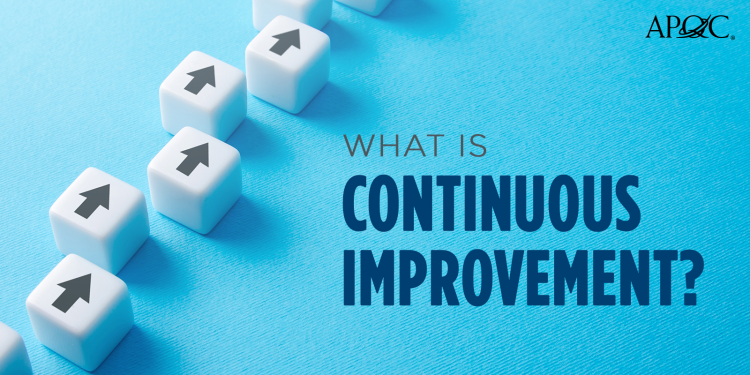
Continuous improvement is the ongoing improvement of business processes in terms of quality, improvement, cost, or cycle time.
The goal of process management is to improve performance. Although you can pursue process improvement without the benefit of process management—as many organizations do—this typically results in fragmented, random acts of improvement. The improvements may look exciting individually, but without an overarching management strategy, they often breed unintended consequences that harm other parts of the organization. To avoid this, APQC recommends employing process improvement in tandem with the other tenets of process management, which lay a foundation for focused (rather than random) improvement.
Every year, APQC surveys process professionals to understand their priorities and challenges for the coming year. According to our 2024 survey, continuous improvement is the number two priority for organizations. Within continuous improvement, organizations are focused on:
- Aligning continuous improvement efforts across the organization (47% of respondents)
- Creating a continuous improvement culture (45% of respondents)
- Creating a systematic approach to identifying improvement opportunities (42% of respondents)
- Engaging front-line employees in continuous improvement efforts (24% of respondents)
- Developing criteria for project prioritization and selection (24% of respondents)
Align Continuous Improvement Efforts Across the Organization
APQC suggests that organizations align all improvement activities with one another. Make sure that improvements in one area of the business do not conflict with improvements in another area. And ensure that no two groups are working on improvements that cover the same ground to avoid duplicated efforts and excessive work interruptions. By utilizing an end-to-end approach for process management, organizations can benefit from balanced improvements, meaning they see the whole process from end to end, and understand how a change in one process could affect the others.
Additionally, when looking at continuous improvement efforts, organizations should try to avoid the “next best thing”. Organizations should take a moment to truly evaluate their improvement opportunity, asking questions like:
- Does the data make sense?
- Are we collecting the right data?
- How will we measure the success of the improvement?
- Will this improvement actually effect this data point?
- Will it affect the data in the way we intend for it to?
It is important to keep in mind that improvement initiatives should propel an organization toward its goals. If improvements are superfluous or conflict with strategy, they should be phased out so resources can be deployed more effectively.
How to Engage Employees in Continuous Improvement
When the people involved in business activities that need to be streamlined or reimagined withdraw from the process, managing change becomes even harder than usual. These nine approaches can help engage and empower employees in the work of organizational process improvement:
- Find their pain points
- Give them a stake
- Create incentives
- Communicate, communicate, communicate
- Show, don’t just tell
- Focus on development and advancement
- Offer training
- Provide adequate time for change
- Reward for success
Dig deeper into these 9 approaches in APQC’s article, 9 Ways to Engage Employees in Process Improvement.
How to Create a Continuous Improvement Culture
Every leader knows that culture determines the success or failure of an organization. Strong culture can help an organization to overcome big obstacles; while weak culture leads to stagnation. But how do you build a successful culture—one that is process driven and devoted to continuous improvement?
In a breakout session at APQC'S 2022 Process and Knowledge Management Conference, José Castro, head of continuous improvement, and Luis Duran, continuous improvement and transformation director discussed Corporación Multi Inversiones’ (CMI) shared service center’s strategy for developing a continuous improvement and process-driven culture that enables standardization and competitiveness. Their strategy included:
- Identifying shared values
- Organizing for change
- Creating a shared language and behavior
- Identifying technology and methods
Learn more in the session summary and their case study found in APQC’s Resource Library.
Dive Deeper
Explore APQC’s Resource Library for more information on continuous improvement, process and performance management priorities and challenges, and more:
- Best Practices in Process Improvement: The Seven Tenets of Process Management
- Systematic and Automated Continuous Improvement Case Study
- Driving Continuous Improvement for Shared Services at CMI
- Top Priorities for 2024 and How APQC Research Can Help
- Top Continuous Improvement Priorities in 2024
- 2024 Process and Performance Management Priorities and Challenges
- How Continuous Improvement and Measurement Will Evolve for Process and Performance Management in 2024
- Knowledge Management and Process Management: A Winning Combination for Continuous Improvement